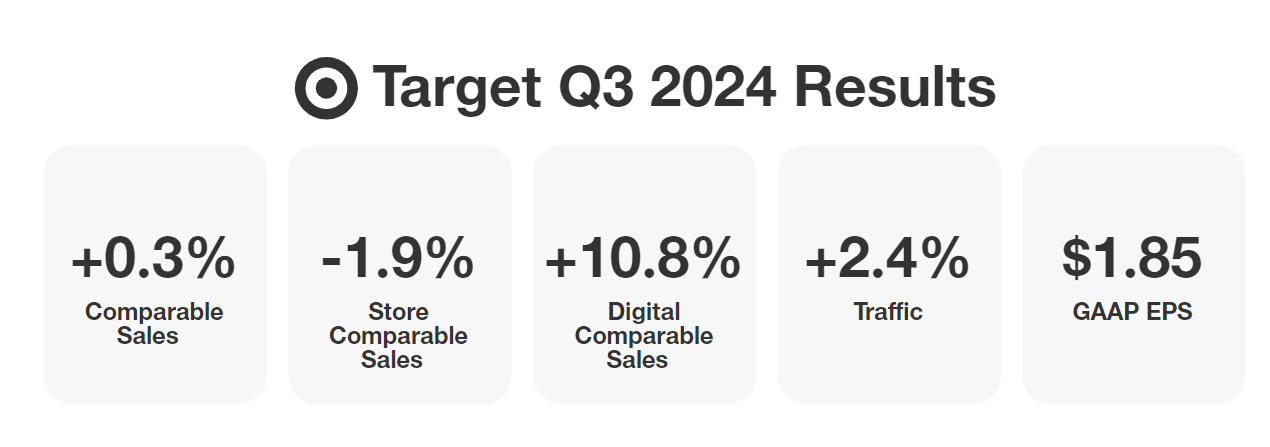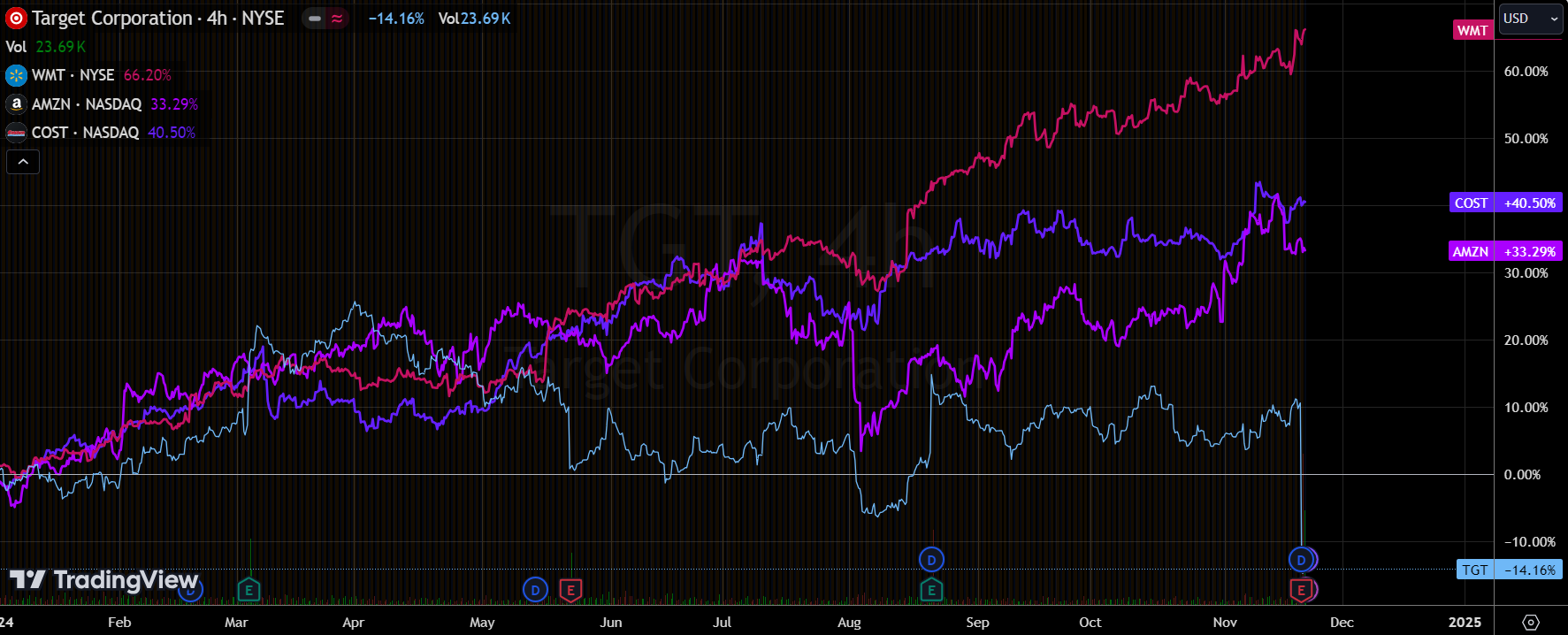$Target(TGT)$ plunged 21% after its Q3 earnings report, seemingly encountering yet another major challenge since the inflation crisis, with its weaker-than-expected performance, as reflected in its financials, the performance of its various business segments, and its outlook, similarly falling short of the company's own guidance from last quarter.
Since Target just raised its guidance last quarter, it failed to meet it again this quarter, further making investors question the ability of the company's management.
Financials vs. market expectations
The company is struggling against the backdrop of weak consumption of non-essential goods.
Key financials missed expectations across the board
Overall revenue: $25.67 billion, up 1% (below market expectations of $25.9 billion)
Same-store sales: up 0.3% (below expectations of 1.5%)
Net income: $854 million (down 12%)
Earnings per share: $1.85 (below estimates of $2.30)

Investment highlights
Weak Non-Essential Consumption
The main issue facing Target is the continued weakness in non-essential spending.Despite price cuts to stimulate sales, overall revenue only edged up 1%.This situation suggests that consumers are becoming more cautious in their spending, especially in the face of heightened economic uncertainty.
Growth in e-commerce business
It is worth noting that digital sales performed better and were a key driver of the company's revenue growth.Despite the lackluster overall sales growth, the strong performance of the digital channel may provide some support going forward.
Increased Inventory
Shrinkage and fulfillment costs improved, but higher inventory levels weighed on margins.The company's adjustments in inventory management and product mix also failed to meet consumer demand in a timely manner, thereby affecting sales.Meanwhile, uncertainty in the current macroeconomic environment was a major factor in the poor performance.Declining consumer confidence and inflationary pressures have caused people to spend less on non-essentials.
Internal Strategy Adjustment
Although Target adopted a price-cutting strategy to stimulate sales, this strategy was not as effective as expected, with comparable sales deteriorating quarter-over-quarter and biennium-over- biennium due to the overall unfavorable consumer environment.
Increased Competition
Competition in the retail market is fierce, and major retailers are adapting their strategies to appeal to consumers.Target is facing pressure from competitors such as $Wal-Mart(WMT)$ and $Amazon.com(AMZN)$ Meanwhile, big brands are getting bigger at an accelerated pace.Amazon, Walmart and $Costco(COST)$ account for 50% of incremental retail sales and more than 75% of incremental e-commerce sales, with other shopping center retailers and e-commerce players vying for the remaining share.
Market Feedback and Investor Focus
Sharp drop of more than 21% reflects investors' concern about the company's future performance, and the company's PE TTM also stays at 15x, which is lower than the industry average, and also implies that investors' confidence in the company is low
The next focus should be on
Holiday season sales performance
Digital Transformation Progress
Cost Control and Efficiency Improvement

Comments
what would u predict its sale in Christmas this year?
Not surprised, TGT is nearly dead